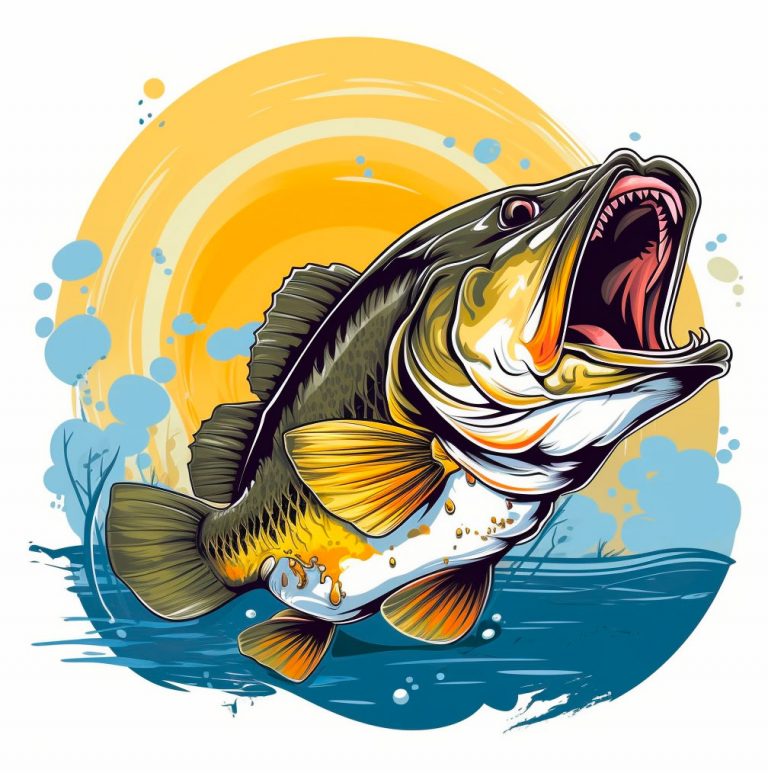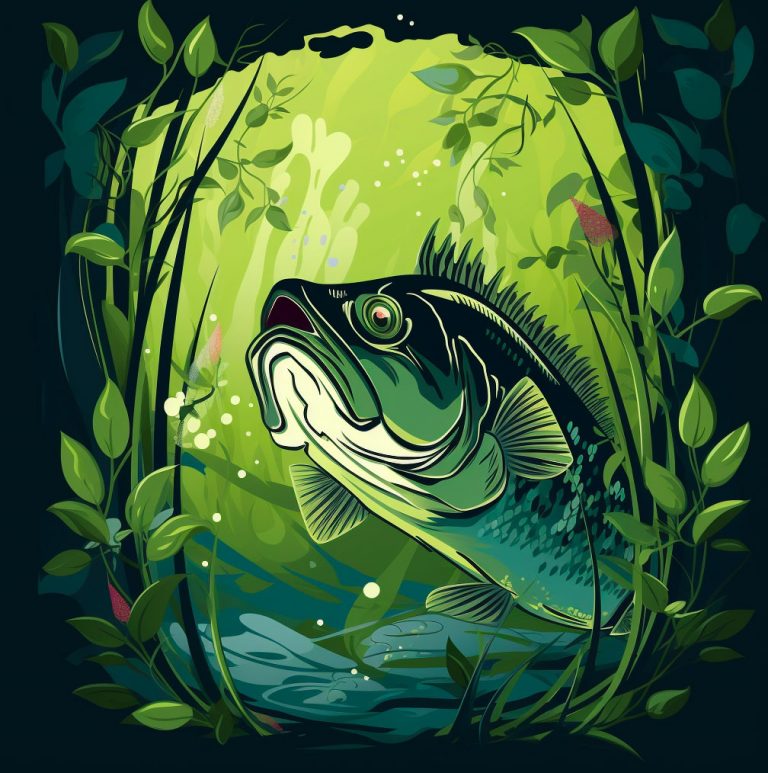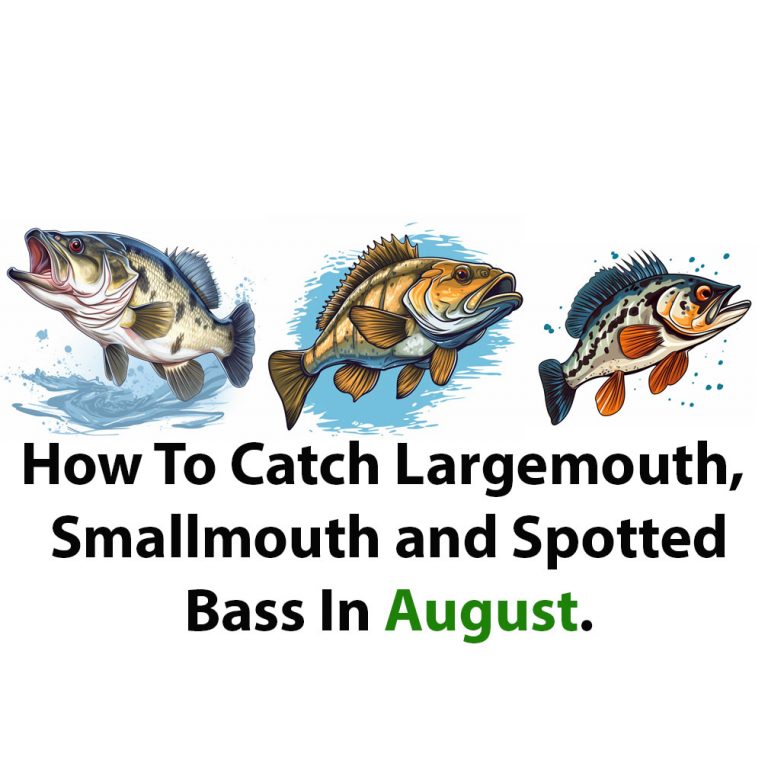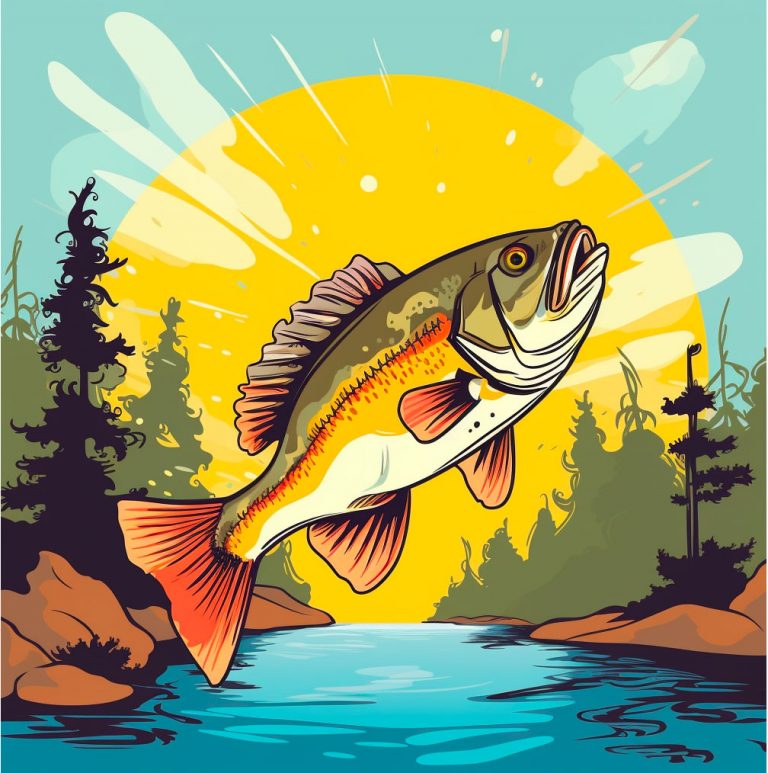Early summer is a great time to target bass as they begin to transition from their spawning patterns to their summer feeding habits. As the water temperatures rise, the bass become more active and start to move into deeper water.
Jigs
Jig fishing is a productive method for catching bass at this time.
Jigs are a great choice for fishing in the early summer since they are a versatile bait that can be fished in a variety of ways. It’s crucial to adjust the jig’s size and color to the fishing environment when using jigs to catch bass. A natural-colored jig with a gentle motion may work better in clear water, while a brighter, more forceful jig may work better in stained water.
Early in the summer, it’s crucial to concentrate on locations where the bass are probably holding while jig fishing for them. This can include drop-offs, weed edges, and other fish-covering structures. Jigs can be used to fish at various depths by altering their weight or recovery rates.
In the early summer, hopping jigs around the bottom is a productive method of fishing. This entails casting the jig out, letting it sink to the bottom, and then moving it along the bottom with a series of quick, abrupt jumps. As a crawfish or other bottom-dwelling creatures might be a favored diet of bass, this mimics their movement.
Early summer fishing with jigs can also be successful by swimming them through the water column. To do this, swim the jig through the water steadily like a baitfish by utilizing a steady retrieve. When bass are eating on baitfish in open water or close to a structure, this can be quite beneficial.
Overall, using jigs to fish for bass in the early summer can be a very successful method of getting fish. You may improve your chances of success and catch more fish by choosing a jig that is the right size and color for the conditions you’re fishing in and concentrating on places where the fish are probably holding.
Topwater Lures
In the early summer, topwater lures may be highly productive for catching bass, particularly in the morning and evening when the water is colder. These lures can cause bass to make powerful strikes by simulating the movement of baitfish on the water’s surface.
The popper is one of the best topwater lures for bass fishing in the early summer. Poppers feature a concave face that, when they are retrieved, makes a popping sound that can be quite alluring to bass. They perform best when recovered in quick, abrupt jerks that produce a popping and splashing motion on the water’s surface.
The buzzbait is another productive topwater lure for bass fishing in the early summer. When retrieved, buzzbaits make a loud buzzing noise that can be quite successful in luring bass. Buzzbaits have a propeller blade on the front. They perform best when promptly retrieved and close to the water’s surface.
Another topwater lure that can be used to successfully target bass in the early summer is the walking bait. When retrieved, these lures feature a side-to-side walking motion that can be highly alluring to bass. They perform best when they are slowly and rhythmically recovered.
Early summer is prime time for bass topwater lure fishing, so it’s critical to monitor the weather and modify your retrieve as necessary. A slower retrieve might be more successful in the early and late hours of the day when the water is cooler. A quicker retrieve may be essential to initiate strikes on hot, sunny days.
Targeting locations with structure and cover, such as weed beds and downed trees, is also crucial because bass are likely to be hiding and feeding in these places. You can improve your chances of catching a large bass in the early summer by employing topwater lures in these locations.
Spinnerbaits
Bass fishing spinnerbaits are a versatile and effective lure, and they can be particularly effective in the early summer. Spinnerbaits can be a fantastic tool for catching bass when they are transitioning from their spawning grounds to their summer haunts in many bodies of water.
The fact that spinnerbaits may be fished in a variety of ways is one of the benefits of utilizing them in the early summer. Fish that are migrating from their spawning sites to deeper water can be easily targeted by slowly rolling a spinnerbait through shallow water. As the spinnerbait may be fished just above cover to elicit strikes from bass, this can be particularly useful in places with a lot of vegetation or other cover.
In the early summer, burning spinnerbaits through deep water is another productive technique. This can be a wonderful approach to catch fish that are hungry for baitfish in open water and are aggressive. It’s crucial to maintain the spinnerbait’s rapid movement and employ a steady retrieve when burning it. In low light situations, this can aid in causing bass to react with strikes.
To effectively use spinnerbaits in the early summer, it’s important to pay attention to the weather and modify your presentation as necessary. A larger spinnerbait with a lot of flash and vibration can work well if the water is dirty or murky. A smaller, more discrete spinnerbait may be preferable if the water is clear.
In general, spinnerbaits are a flexible and successful lure for pursuing bass in the early summer. You may improve your chances of success and catch more bass by tailoring your presentation to the surrounding factors and keeping an eye out for fish activity.
Crankbaits
One of the most adaptable lures for bass fishing in the early summer is the crankbait. They are available in a range of sizes, shapes, and colors to imitate various species of baitfish, and they can be used to catch fish in both shallow and deep water.
Using a slow and steady retrieve is one of the greatest ways to fish crankbaits in the early summer. As a result, the lure can descend to the required depth and remain in the strike zone for an extended period of time. Additionally, you may alter the pace of the retrieve to elicit strikes from bass that are reacting to the lure.
It’s crucial to consider the sort of structure and cover present when crankbaiting in shallow water. Bass that are hanging close to the margins of these structures can be targeted using crankbaits, which also work well around weed beds, rocks, and downed trees.
In deeper water, crankbaits can be trolled behind a boat to cover more ground or fished along drop-offs and ledges. It’s critical to select a crankbait that is the proper size and weight for the water depth in which you are fishing. You can fish deeper water more successfully if you use a heavier crankbait that dives deeper.
Early summer crankbait fishing is also fantastic when done with a stop-and-go retrieve. This entails pulling the lure in with a few cranks, pausing, and then pulling it out again. This is particularly useful when pursuing bass that are holding in deeper water or when fishing near cover.
In general, crankbaits are a fantastic lure option for bass fishing in the early summer. They are adaptable, simple to use, and may be fished in numerous ways to target various varieties of bass. This summer, you can learn to utilize crankbaits successfully and catch more fish by practicing and experimenting with them.
Soft Plastic Worms
Bass have been caught using soft plastic worms as a traditional bait for years. They are adaptable lures that work well in a range of situations and may be fished in different ways. Bass frequently go through a transitional stage in the early summer as they relocate from their spawning regions to their summer haunts. When fishing at this time, soft plastic worms can be an excellent bait because they can be worked slowly or swiftly and at a variety of depths.
Texas-rigged soft plastic worm fishing is one of the most well-liked techniques. You’ll need a worm hook and a bullet weight to rig a worm Texas-style. To begin, thread the worm onto the hook, ensuring sure to bury the hook’s point in the worm’s body. After that, attach a hook and slide the bullet weight onto the rope. The worm can be fished through cover with this setup without becoming tangled.
Carolina-rigged soft plastic worm fishing is another well-liked technique. You’ll need a worm hook, a bullet weight, and a swivel to rig a worm Carolina-style. To begin, thread the worm onto the hook, ensuring sure to bury the hook’s point in the worm’s body. After that, attach the swivel and slide the bullet weight onto the line. This setup works well in both clear and stained water and enables the worm to be fished at various depths.
Another well-liked technique for fishing a soft plastic worm is wacky rigging. You will need an O-ring and a crazy hook to rig a worm in this manner. The worm must first have the O-ring attached before the hook can be inserted through both the worm and the O-ring. This apparatus, which works well in clear water, allows the worm to move normally in the water.
It’s crucial to change the retrieve speed and presentation when using soft plastic worms as bait. In clear water, slowly dragging the worm down the bottom may be beneficial, but a faster retrieval and twitching motion may cause bass to attack back. Additionally, it’s crucial to target bass near structure and cover because they frequently use these places as ambush points.
Overall, soft plastic worms are a versatile and successful bait for bass fishing in the early summer. You can catch more bass by trying out various rigs and approaches to see what works best for the fishing conditions.
Swimbaits
Bass fishing in the early summer is a terrific time to use swimbaits, especially when the water is clear. They can be successful for pursuing both shallow- and deep-water fish since they mimic the motion of baitfish. Swimbaits come in a wide range of sizes and designs, so it’s crucial to pick the best one for the fishing situation.
Using a slow retrieve is one productive approach to catch swimbaits in the early summer. To accomplish this, cast the bait into the water and slowly reel it back in while allowing it to swim through the water column. This method can be especially successful in clear water since bass are attracted to the lifelike movement of the bait.
Early summer swimbait fishing can also be accomplished with success by using a stop-and-go retrieve. This entails pulling the bait in for a few cranks, stopping the retrieve to let the lure sink for a while, and then starting the retrieve again. Particularly in deeper water, this strategy can be useful for getting bass to make a reflex strike.
The size and color of the swimbait should be taken into account when choosing one for bass fishing in the early summer. Bass can be caught in shallow water using smaller swimbaits, while deeper fish can be caught using larger baits. Choosing a color that complements the forage in the body of water you’re fishing in is also crucial.
In general, swimbaits can be a fantastic option for bass fishing in the early summer, especially when the water is clear. Anglers can improve their chances of catching more and bigger fish by employing the proper technique and making the right bait selection.
Jerkbaits
Jerkbaits are a great lure choice for early summer bass fishing, as they can be fished at different depths by varying the retrieve speed. They are especially effective for targeting suspended fish, which can be common during the early summer months when bass are transitioning from their spawning grounds to their summer haunts.
When fishing with jerkbaits, it’s important to use a rod with a fast action and a sensitive tip, as this will allow you to impart the necessary action to the lure. The rod should also have enough backbone to set the hook and reel in a strong fish.
One of the most effective ways to fish a jerkbait is with a “jerk, pause, twitch” retrieve. This involves casting the lure out and then using short, sharp jerks of the rod to make the lure dart and flash in the water. After each jerk, pause the retrieve for a few seconds to allow the lure to suspend in the water column, and then give it a few twitches before repeating the process.
It’s important to vary the retrieve speed and cadence when fishing with jerkbaits, as this can help trigger strikes from different types of fish. In clear water, a more subtle retrieve with longer pauses can be effective, while in stained water, a faster, more aggressive retrieve may be necessary.
Jerkbaits come in a variety of sizes and colors, so it’s important to match the lure to the conditions you are fishing in. In clear water, natural colors like silver and gold can be effective, while in stained water, brighter colors like chartreuse and firetiger may be more visible to the fish.
Overall, jerkbaits are a versatile and effective lure choice for early summer bass fishing. By varying your retrieve speed and cadence, you can trigger strikes from both active and inactive fish, and potentially land some big bass in the process.
Tube Baits
For bass fishing in the early summer, tube baits are a great option. Bass become more active and begin to swim into shallower water when the water temperature rises. Tube baits are adaptable lures that work well in both clear and murky water and can be fished slowly or fast.
Rigging tube baits with a jighead is one of the greatest ways to catch bass in the early summer. This enables you to fish them close to cover and structure where bass like to congregate. Depending on the type of cover you’re fishing and the depth you want to fish at, you can also use a Texas rig or a Carolina rig to fish tube baits.
It’s crucial to consider the velocity of descent while fishing with tube baits. Early in the summer, bass might be picky and may not be eager to pursue a moving bait. You can give the fish more time to examine the lure and decide whether to strike by slowing the descent of the tube bait.
Additionally, you can experiment with various tube bait colors to find which ones perform best in your local waters. While brighter hues like chartreuse and orange can be useful in stained water, natural hues like green pumpkin and brown can be successful in clean water.
Change up your retrieve speed while using tube baits to catch bass in the early summer. Strikes will occasionally be triggered by a slow, steady retrieval, while other times a rapid, erratic retrieve will be more successful. You may determine what the bass are responding to on a particular day by testing with various speeds.
Overall, using tube baits when bass fishing in the early summer is a terrific choice. They are adaptable, powerful, and may be used in a number of fishing techniques to target bass in various kinds of cover and structure.
Flukes
Early summer bass fishing with flukes, a soft plastic bait that moves like a baitfish, is a terrific option. They are adaptable lures that may be fished in a variety of ways by anglers, including weedless, weightless, and on a jighead. Flukes can be worked slowly or swiftly to imitate the action of running baitfish, and they can be fished on the surface or below the water’s surface.
Early in the summer, cover like weed beds, laydowns, and docks can make flukes particularly effective. During this time of year, bass frequently seek out cooler water temps and cover, and these places offer both. To get bass to strike, flukes can be worked slowly along the margins of cover or skipped beneath docks.
Targeting bass that are suspended in open water during the early summer is another productive fluke fishing strategy. Flukes can be cast out to places where bass are holding and rigged on a weighted hook or jighead. To get a bass to strike in response, the bait can then be manipulated in a jerking motion to imitate the movement of baitfish.
It’s crucial to consider the water’s temperature and quality when fluke fishing. Brighter colors can make the lure stand out in stained water while more natural-looking colors and patterns may be more successful in clearer water. Utilizing the proper weight and rigging for the circumstances is also crucial. A weedless rigging may be required in dense cover to avoid snagging.
Overall, flukes are a versatile and productive bait for bass fishing in the early summer. Anglers can employ flukes to initiate strikes and land more fish during this time of year by concentrating their efforts on bass near cover and suspended fish in open water.
Chatterbaits
Chatterbaits are versatile lures that can be very effective for catching bass during the early summer. Here are some tips for using chatterbaits during this time of year:
- Target Shallow Water: During the early summer, many bass will be in shallow water near cover and structure, and chatterbaits are great for fishing in these areas. Look for areas with vegetation, laydowns, or other structure that could hold bass.
- Vary Your Retrieve: Chatterbaits can be fished at different speeds and depths by varying the retrieve. Try slow rolling the bait along the bottom, burning it just under the surface, or ripping it through cover to see what triggers the most bites.
- Experiment with Different Trailers: The trailer on your chatterbait can make a big difference in how it performs and how many bites you get. Try using different types of trailers, such as paddle tails or craws, to see what works best for the conditions.
- Pay Attention to Water Temperature: During the early summer, the water temperature can vary greatly from day to day, and this can affect how the bass are feeding. If the water is cooler, try fishing the chatterbait slowly and steadily. If the water is warmer, try ripping the bait through the water to trigger reaction strikes.
- Fish Stained Water: Chatterbaits are great for fishing in stained water, as the vibration and flash can help the bass locate the bait. If the water is clear, try using a more natural color pattern, while in stained water, try using brighter or more contrasting colors.
By following these tips, you can increase your chances of catching more bass with a chatterbait during the early summer months.

Catch Bass In 90 Degree Water
Introduction: Catching bass in 90 degree water can seem like a daunting task. Fishing in hot water temperatures can be extremely challenging, and it is important to have the right techniques and strategies in place to make sure you catch that prized bass. For a complete look at summer bass fishing In this article, we […]

Why bass are harder to catch in the summer
Fishing enthusiasts know that bass fishing in the summertime can be challenging. The clear sunny skies, warm weather, and lack of rain and wind make it difficult to catch bass. Many anglers have experienced blank days in the summer, wondering why bass no longer seem to be interested in their baits that they easily caught […]

How To Catch Bass In August
Introduction I get a kick every time I step into the water since I’m an experienced bass fisherman. And as August approaches, that sensation only intensifies. The water is warm, the temperatures are high, but most importantly, the fish are biting. But as any angler is aware, casting a line and waiting for a pull […]

How To Catch Bass During Crawfish Season
As a seasoned angler, I have come to realize the value of comprehending the behavior of the fish you are attempting to catch and the prey they consume. The crawfish is one prey that is very active and common during the bass fishing season. I’ll share my knowledge and expertise on how to capture bass […]

How deep to fish for bass in summer
Fishing for bass in the summer can be quite challenging considering the heat of the sun and the activity of the fishes. Often, this season gives fishermen a hard time finding the right depth to catch bass. There are a lot of variables to consider to bag a substantial harvest during the summer season. Every […]

Summer Bass Fishing: Find Bass Fast
Introduction: Summer is a great time to hit the water for some bass fishing. As the water temperatures rise, the bass become more active and their feeding patterns change. However as you enter the dog days of summer the fish can all but seem to disappear at certain times. We’re going to show you how […]

